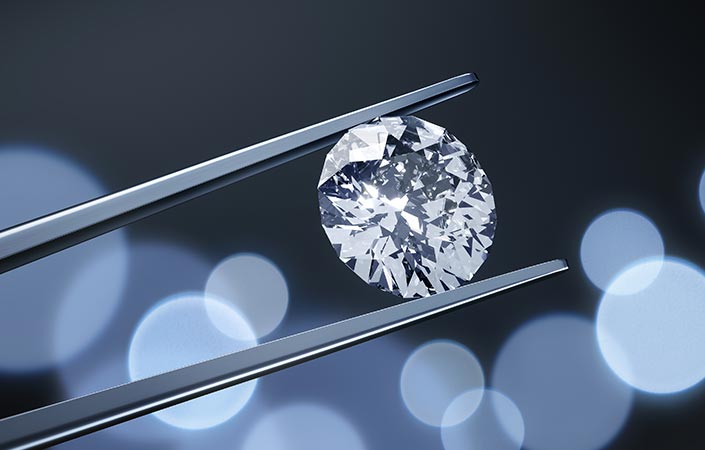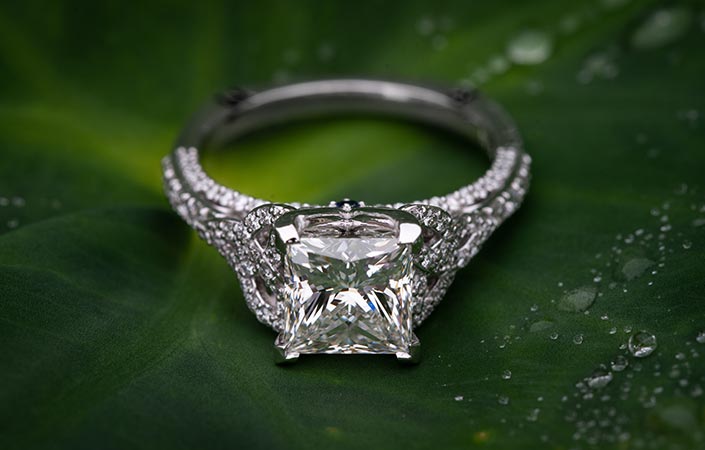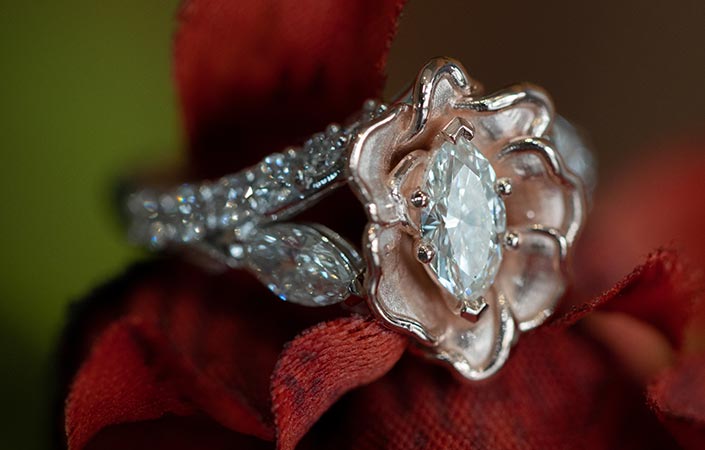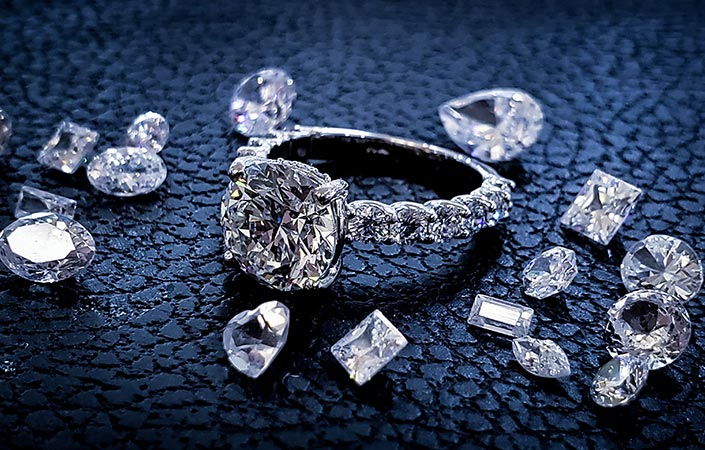Diamond Education
What you need to know before buying that diamond ring or custom jewelry piece.

Five Factors
When it comes to evaluating a diamond, there are traditionally five factors you need to keep in mind.
- Cut
- Color
- Clarity
- Carat
- Shape
Each of the 4Cs interact and influence each other, making every diamond unique. Let us demystify the diamond buying process for you.

Diamond Cut
All polished diamonds are first cut and shaped from rough diamonds. The skill of the diamond cutter determines the quality of the cut—a term used to describe the geometric precision with which all the stone’s facets are produced.
It’s the cut that truly makes your diamond sparkle and shine, which is why we consider cut to be the most important “C” in a diamond purchase. A diamond cut too deep or too shallow won’t reflect light with the same power or efficiency, resulting in a “dull” stone.
Diamond cut is graded on a five-point scale, from Excellent to Poor. We generally recommend buying the best-cut diamond you can afford for a custom jewelry piece that sparkles for life. We can help you find it.

Diamond Color
It’s counterintuitive, but a diamond’s color grade actually refers to its lack of color. A completely colorless diamond will receive the “highest” grade of D; diamonds with a yellow or even brownish tint are graded lower.
Don’t get too hung up on the color grade of your preferred diamond, as it can be difficult to tell the difference between steps in the color scale, especially among those on the higher end. What matters is that it looks good to your eye (not your computer screen) and will work visually in your setting.

Diamond Clarity
A diamond’s clarity grade measures the blemishes and inclusions that occur naturally as diamonds are being formed. Small inclusions can affect how light passes through the diamond, while blemishes on the surface can impact the stone’s appearance.
Flawless diamonds are rare, while the highest graded diamonds (IF, VVS1-2) may have a only small number of inclusions visible only under a loupe or microscope.
Lower graded diamonds (VS1, SI1) will have more inclusions, but many remain “eye clean” and see no reduction in sparkle, making these stones a popular pick for budget-minded shoppers.

Diamond Carat Weight
Carat weight refers to the actual weight of the diamond (not its size), with a 1-carat diamond equal to 200 milligrams. It’s usually the first thing diamond buyers have on their mind when they come into our shop, but it should probably be the last.
Two equally weighted diamonds can be totally different sizes, depending on their cut. We will always recommend you focus on brilliance and sparkle over carat size alone when designing an engagement ring or piece of custom jewelry.

Diamond Shape
This is where it gets fun. We can find the perfect shape to reflect your love’s unique style.
- ROUND BRILLIANT
- PRINCESS
- CUSHION
- EMERALD
- OVAL
- PEAR
- HEART
The Bottom Line
When it comes to selecting a diamond, what works for one customer or jewelry setting might not work for another.
Don’t just rely on grades or ratings when making your selection; make sure you’re working with someone who has the right expertise.
Sure, you could buy a diamond sight unseen and drop it into a setting, but do you really know what you’re getting? Work with our trusted, local experts to find the perfect complement to your dream design.
Not sure what you’re looking for? Let us help you discover it.